Akasa Air Plans To Place A "Substantially" Large Aircraft Order By Year End
Radhika Bansal
25 May 2023
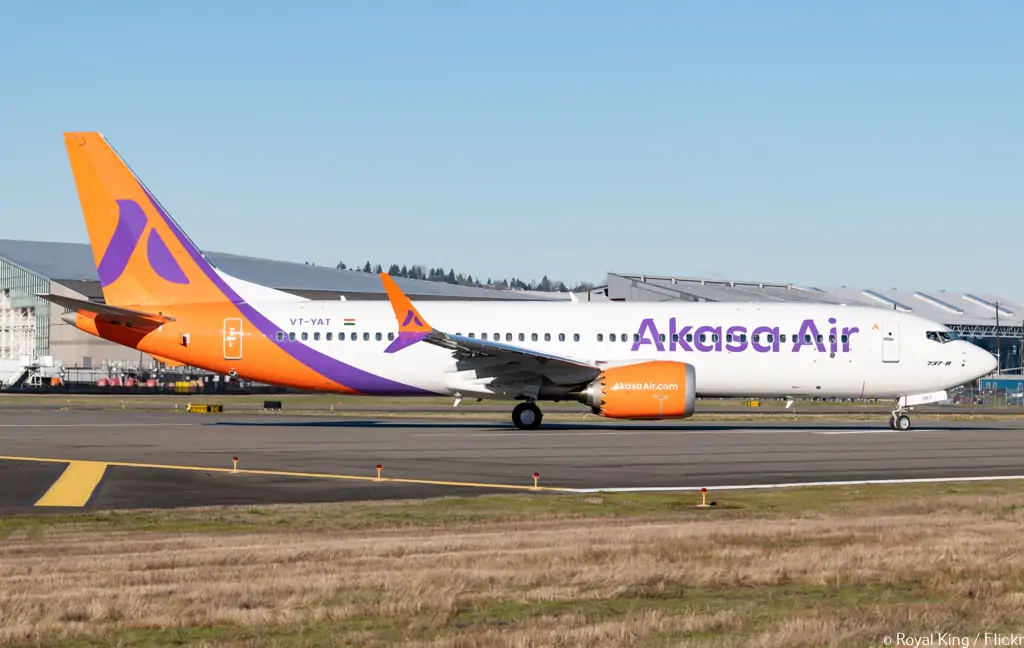
Akasa Air announced placing a "substantially" large order for new narrow-body jets by the end of 2023, said its CEO Vinay Dube. He added that the airline looks to capitalise on booming demand at home and begin international flights.
Vinay Dube, in an interview, said, “Before the end of this year we are going to place another aircraft order that is going to be substantially larger than the 72 aircraft order we have placed. Akasa's founder added that the new order will be for narrow-body planes, but didn’t provide any detail about the number of planes. Dube also didn’t mention whether the order would go to Boeing or Airbus either.
Recently, the 200-day-old airline has taken delivery of 17 Boeing 737 MAX planes out of a total order of 72 jets, which are expected to be delivered by March 2027. The order plans come as travel demand in India has seen a sharp rebound post-COVID-19, making it the world's fastest-growing aviation market, with capacity surpassing 2019 levels and passenger numbers inching close.
Air India placed an order for 470 jets in January, the largest by a single airline, as it looks to revamp its ageing fleet to capitalise on the travel boom at home while also competing with Gulf rivals like Emirates for international passenger traffic. Indian airlines are forecast to order 1,500 to 1,700 planes over the next couple of years, according to consultancy CAPA India, including a likely 500-plane order from Akasa rival IndiGo, the country's biggest airline.
Adding Aircraft In Upcoming Months
Akasa Air will add three planes to its fleet within the next three months to reach 20, making it eligible to fly to international destinations as per Indian government rules, Dube said.
"By the end of the year, we hope to be flying internationally," he added, with the carrier targeting destinations within the range of a 737 MAX in South Asia, Southeast Asia and the Middle East. Dube said in the domestic market, Akasa would focus on its strategy of connecting smaller cities with the country's major metros at a time when demand remains strong despite high ticket prices. "Everything is growing gangbusters," he said. "The demand in India as a whole is going to continue to grow and grow and grow."
He further said, “We are going to stay focussed on narrow bodies that are well not domestic it will be international as well but international within the sphere of 5.5 to 6 hours is what the capability of a narrow body is and that is what we will stay focussed on.”
Akasa Air now flies to 17 destinations across India, with Kolkata being it's second in West Bengal after Bagdogra, which launched in March. The addition of the capital is significant since Akasa now flies to Mumbai, Delhi, Chennai, and Kolkata, all four major metro cities in the country.
Akasa Air’s 'World's Youngest Fleet'
Akasa Air boasted about having the youngest fleet and being the greenest airline in the world while flaunting its sustainability credentials. The airline, which started flying in August 2022, currently has a fleet of 19 Boeing 737 MAX aircraft with an average age of 3.7 years. Let's learn more.
The carrier owns 19 737 MAX aircraft, with the oldest aircraft being 4 years old and the youngest being 3.3 years old, according to Planespotters.net. These aircraft are 3.7 years old on average. Given that Akasa only started flying eight months ago, meaning that its aircraft are much older than its operations, this might seem interesting.
However, Akasa opted for an aggressive delivery schedule that saw it pick up dozens of white-tail aircraft from Boeing (planes that were not taken up by the customer). This also explains why the carrier still has 12 business class seats on 10 of its 19 aircraft currently, although this has been affected by supply chain issues affecting cabin seating sharply.
When it comes to sustainability, the airline is working hard to reduce its footprint. In addition to operating some of the most efficient jets in the sky today, Akasa Air has also declined the customary water cannon salute given to new operators during their first flights. The carrier estimates this has saved 300,000 litres of water to date, a notable figure.
About Akasa Air
Akasa Air, a brand of SNV Aviation Private Limited is an Indian low-cost airline headquartered in Mumbai, Maharashtra, India. It was founded by Vinay Dube and Aditya Ghosh with investor Rakesh Jhunjhunwala holding a 46% stake in the airline. The carrier launched its first commercial flight on August 7, 2022, and currently has a fleet of 19 planes. Akasa Air now flies to 17 cities, operating over 900 weekly flights across India, and will likely start overseas flights later this year. The airline will continue to grow its network to establish a strong pan-India presence focusing on the metro, Tier 2 & Tier 3 route connectivity. It has placed a firm order for 72 Boeing 737 MAX airplanes, powered by CFM fuel-efficient, LEAP-1B engines.
Being a low-cost airline, Akasa Air operates an all-economy configuration in their Boeing 737 Max variants, with a total of 189 or 174 passengers in the -8 variant and 197 in the -200 variant. To keep fares at a low price, the airline does not provide any in-flight meals, however, the airline operates Cafè Akasa, its own catering service where passengers can purchase food on board. The airline has no In-Flight Entertainment system. The airline offers passengers the "Flexi premium services" where passengers get food, seat selection, priority and lower costs for date changes and cancellations. This service is similar to other Low-Cost Carriers in India.
Read next
Someone recently tweeted pilots’ salaries in an airline. That tweet began with a ‘phew,’ so I will list out the realities of a pilot’s life, just a few! I didn’t say the realities of a pilot’s job, because it’s not just a job; it’s an interesting lifestyle, but not a cakewalk. It requires commitment, consistency, and care, besides the ability to face constant criticism! I’ve heard it said, “Pilots are just glorified drivers who are under-educated and overpaid.”
The minimum requirement for a CPL (Commercial Pilot Licence) is Class 12, but not all pilots are only 12th pass! Among my pilot friends, 2 are Ph.D., 3 Doctors, 2 Engineers, lots of graduates, many are ex-military, and one is a former policeman. I retired from the Indian Air Force, having done BA from NDA in Maths & Physics. And I am also MDS. Hearing that, one gent started discussing his dental problems with me, till I told him I was a Master not in Dental Surgery, but in Defence Studies! But even those with formal education only till the 12th standard, must study further to get a CPL.
It is tougher than college, though they do not get a degree certificate. If CPL is like graduation, you need post-graduation as ATPL (Airline Transport Pilot Licence) to be promoted to a Captain from a Co-pilot, after a lot of flying, additional training, and tests. I have seen youngsters turn mature and worldly-wise by the time they complete CPL training—which not everyone who tries it can do.
Medicals
Pilots need to be fit, to begin with, must prove their fitness annually, and, after the age of 60, every six months. Thanks to that sword (since we are dealing with doctors here, shall we call it a syringe?) hanging over the head, one has to be careful throughout.
Written Exams
A pilot must pass exams in many myriad subjects. They are: Air Regulations, Aviation Meteorology, Air Navigation, Technical General, Technical specific to the aircraft, Radio Telephony, and English language. And passing marks are not 33%, but 70%.
It is not only the written exams. There are viva voce tests too. In the Radio Telephony oral, the examiner asked me, “Why does the table fan rotate clockwise and a ceiling fan anti-clockwise?” When I looked up in despair, he thought I was looking at the fan, but I was looking for God in His heaven! Yes, I passed even that viva!
Flying Skill
Finally, in addition to all the theories, one must also be able to fly a plane. That’s not really for everyone.
Training costs
The cadet program of an airline costs over a crore (10 million) Rupees. That requires an education loan and repayment in EMIs over decades, after—and if—one gets a job. Many waited years to get an airline job, and there are 3000 jobless pilots in India now.
Super specialty
After getting the basic CPL, one needs Type Rating training on any of the two popular commercial aircraft, Boeing 737, or Airbus 320, at an additional cost. When you choose one type, you make yourself ineligible for the airlines which do not fly that aircraft. That’s akin to being an eye specialist, but only of the left eye! And with such super-specialization, job opportunities—without experience—are extremely limited.
Decision Time
In many professions, you get weeks, if not months, to make a decision. A pilot usually has only a few seconds. Yet, the punishments for errors are swift and harsh, because the mistakes get highlighted in full media glare. In Bollywood, they say, ‘You’re as good as your last film.’ In flying, I say, ‘You’re as good as your last landing.’
But they make one film per year. And a pilot lands 3 or 4 times a day! For years, I have done 5 landings in a workday stretching 12 hours, from noon to midnight. With delays plus weather, imagine how demanding and exhausting that was.
No Second Chance
In this job, there is no undo, no delete, and no pardon. Even a minor mistake can cause loss of lives, loss of reputation, and a loss of livelihood. An actor may survive a few flops and a cricketer a few ducks, averaging it with earlier successes. But a pilot isn’t allowed a single mistake, for there’s never a second chance.
High stress
Pilots’ working hours are odd and change daily, mostly with minimum mandated rest in between. And I have often worked 9 to 5.
“No big deal. I do that daily,” you say? Well, I mean 9 PM to 5 AM! How’s that?
Also, we have no weekends, and get only the eighth day off. And that could be in some faraway hotel, not at home. Add to that the jet-lag after international flights. No wonder the stress levels are high, causing invisible yet irreparable damage to health. I know. I suffered, and recovered, and soldiered on. But for how long? I don’t know.
Here’s a quote: ‘You envy my shoes because they look so nice and shine so well. Do you know where they pinch me?’
Phew!
This article was first published on Indiatimes.
Read next
MoCA Introduces UDAN 5.1 To Bolster Connectivity Through Helicopters In Remote Areas
Radhika Bansal
25 May 2023
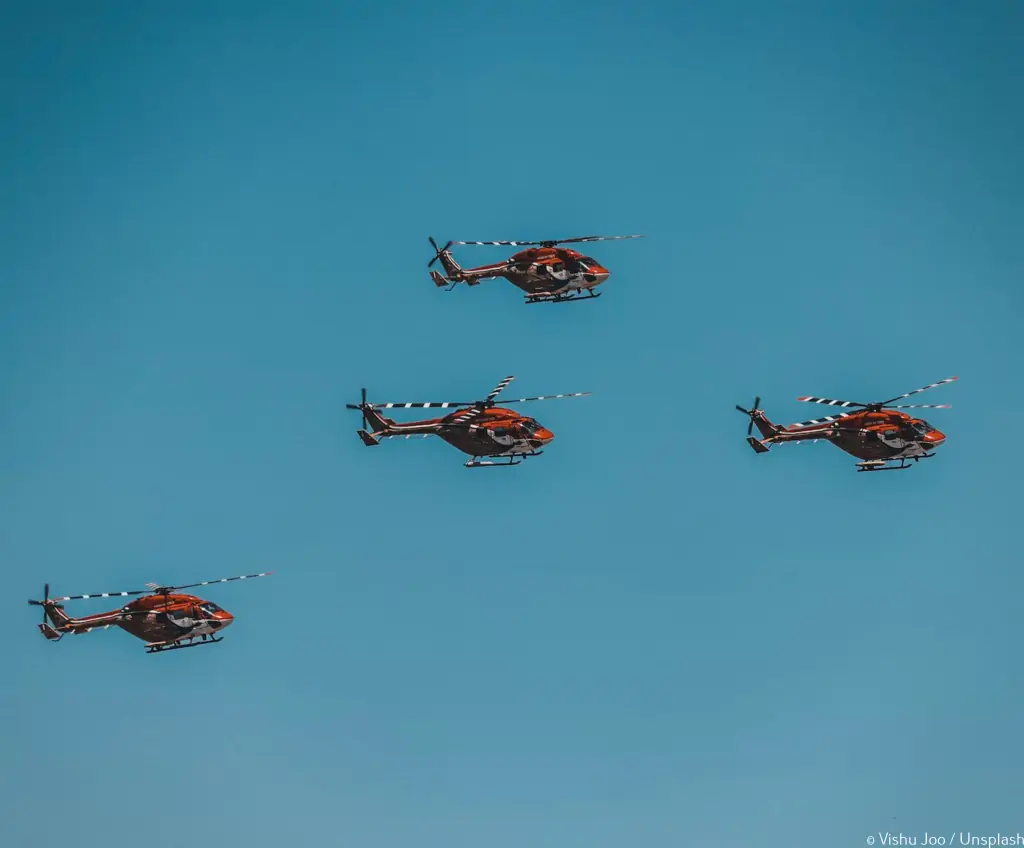
In a bid to bolster connectivity and ensure seamless access to remote areas across the nation, the Ministry of Civil Aviation, on May 24, unveiled UDAN (Ude Desh Ka Aam Nagrik) 5.1. Building upon the success of the Regional Connectivity Scheme (RCS)- UDAN through four previous rounds, and with the ongoing implementation of the fifth round (version 5.0), the latest initiative takes a stride forward by incorporating helicopters to achieve last-mile connectivity.
According to an official statement, for the first time under RCS-UDAN, this round is designed specifically for helicopter routes. UDAN 5.1 introduces several notable features to enhance connectivity and accessibility across the country.
One key update is the expanded operational scope for operators, allowing routes where either the origin or destination location falls within a priority area. Previously, both points had to be in priority areas to qualify.
Additionally, the scheme has reduced airfare caps by up to 25% to make helicopter travel more affordable for passengers. Moreover, the Viability Gap Funding (VGF) caps for operators utilising single and twin-engine helicopters have been significantly increased. Viability Gap Funding (VGF) caps (subsidy) for the operators have been improved “substantially” for both single and twin-engine helicopters to enhance financial viability for operating the awarded routes.
These adjustments are designed to improve the financial viability of operating the awarded routes, encouraging more operators to participate in the scheme and contribute to better connectivity throughout the nation.
Jyotiraditya M. Scindia, Union Minister of Civil Aviation and Steel said, "The latest round of UDAN scheme is a testament to two emerging phenomena in Indian civil aviation - one, a deeper democratisation of air travel with a focus on last-mile connectivity. Second, a growing appetite for helicopters to aid tourism. Greater helicopter penetration through such efforts will help boost tourism, hospitality, and thus, our local economies."
Focus on Helicopter Operations
UDAN 5.1, developed after consultations with stakeholders including helicopter operators, aims to provide last-mile connectivity and boost the Indian civil aviation industry's helicopter segment.
The current version of the scheme has been designed after consultations with all stakeholders including helicopter operators. While the intended target is to provide last-mile connectivity, it is also projected to give the helicopter segment of the Indian civil aviation industry a much-needed boost, the release said. To date, 46 helicopter routes have been operationalised under previous rounds of the scheme, benefitting several hilly and North East states. The release further said that This round targets coverage of a much larger number of routes. At present, there are only around 280 civilian choppers in India which are used in various sectors.
Under the UDAN scheme passengers have received the benefit of air connectivity, airlines have received concessions for operating regional routes, and unserved regions have received the direct and indirect benefits of air connectivity for their economic development. The present version of the scheme will be another step towards the Prime Minister's vision of allowing the common man to travel by air at affordable fares to remote destinations of the country.
The UDAN scheme has recently been completed for five years. The scheme was initiated in October 2016 to fulfil the aspirations of the common citizen, with an enhanced aviation infrastructure and air connectivity in tier II and tier III cities.
The government has approved the ‘Revival of unserved and under-served airports’ scheme for the revival and development of 100 unserved and under-served airports, helipads and water aerodromes by 2024. It is an ongoing scheme where bidding rounds are conducted occasionally to cover more destinations or stations and routes.
Read next
The delivery of the first Airbus A300B2 to Lufthansa in 1976 was a watershed moment in European civil aviation, laying the groundwork for a solid collaboration. It marked the beginning of a collaborative journey centered on technological advances, fleet modernization, and enhanced air travel experiences. The subsequent supply of almost ten distinct Airbus aircraft models to practically every Lufthansa Group air operator has strengthened the bond between these two industry titans.
Present Situation
Over the years, the aviation sector has experienced incredible breakthroughs and collaborations. One such alliance, formed on February 9, 1976, between Lufthansa and Airbus, has prospered and persevered for over five decades. The arrival of Lufthansa's first Airbus A300B2 marked the beginning of this strong cooperation, laying the groundwork for an extraordinary adventure in European civil aviation. This cooperation reached a watershed point today, as the 600th Airbus aircraft, an A321neo, was formally handed over to Lufthansa in a prestigious ceremony at Airbus' Hamburg-Finkenwerder facility.
Collaboration and Expansion
With the arrival of new Airbus aircraft types since that first delivery, Lufthansa's fleet has seen a remarkable makeover. Lufthansa and Airbus' relationship has permitted fleet growth, modernization, and the adoption of cutting-edge technology. Lufthansa has been able to provide its passengers with enhanced comfort, fuel efficiency, and environmental sustainability as a result of this collaboration.
The Significant Achievement
The transfer of the 600th Airbus aircraft, an A321neo bearing the registration D-AIEQ, to Lufthansa is a time of tremendous pleasure and celebration for the company. This achievement demonstrates the partnership's tenacity and mutual trust between the two firms. The ceremonial event, held at Airbus' Hamburg-Finkenwerder facility, was attended by important executives from both Lufthansa and Airbus, highlighting the significance of this accomplishment. The A321neo, which seats 215 passengers, is a state-of-the-art and fuel-efficient short- and medium-haul twinjet that has been in service with Lufthansa since 2019. D-AIEQ has the appellation 'Münster' after the German city.
The Implications for European Civil Aviation
Lufthansa and Airbus' collaboration has had a significant influence on European civil aviation. Airbus has contributed to greater connectivity, expanded capacity, and improved travel experiences for passengers by offering sophisticated aircraft solutions to Lufthansa and its subsidiaries. Lufthansa has been able to extend its route network, improve its market position, and cover a varied variety of destinations thanks to the use of contemporary aircraft.
Conclusion
The delivery of the 600th Airbus aircraft to Lufthansa represents a significant milestone in the two industry leaders' long-time collaboration. Lufthansa's relationship with Airbus has been marked by technical developments, creativity, and a shared dedication to quality, from the first Airbus A300B2 to the most recent Airbus A321neo. This accomplishment strengthens the link between Lufthansa and Airbus and lays the road for future success.
With Inputs from Lufthansa Group
Read next
The Xinjiang Airport Group and Chengdu Airlines have played important roles in the development of China's aviation sector. Their partnership in commencing ARJ21 operations in Xinjiang is a significant step forward for both entities and the region as a whole.
Present Situation
Chengdu Airlines is preparing to launch ARJ21 operations in the Xinjiang Uygur Autonomous Region, according to the Xinjiang Airport Group's official WeChat account. This historic accomplishment represents the first time a Chinese-made aircraft will operate commercially in China's north western border province.
The ARJ21 Aircraft
The ARJ21, or Advanced Regional Jet for the Twenty-First Century, is a regional aircraft developed by China's Commercial Aircraft Corporation (COMAC). This innovative aircraft has cutting-edge features and specifications that comply with international standards. Its successful commercial operation in Xinjiang is critical for China's aviation manufacturing sector since it demonstrates the company's capacity to compete with major international aircraft manufacturers.
ARJ21 Operations Expansion
Chengdu Airlines' decision to expand ARJ21 operations to the Xinjiang Uygur Autonomous Region is a strategic move. This region, famed for its cultural variety and stunning scenery, has enormous tourist potential. The extension will benefit not just tourism but also regional development and economic progress by connecting Xinjiang with other important cities in China.
Xinjiang Uygur Autonomous Region
The Xinjiang Uygur Autonomous Region, located in northwest China, is strategically important in terms of connectivity and trade. It is a culturally varied region with a rich history that provides a variety of tourist attractions. The launch of ARJ21 operations will provide more convenient and efficient air travel choices, boosting tourist and economic activity in the region.
Impact on China's Aviation Industry
The start of ARJ21 operations in Xinjiang is a significant milestone for China's aircraft manufacturing industry. It showcases the country's capacity to manufacture modern aeroplanes and compete globally. China enhances its position in the international aviation sector by boosting local operations and reducing its dependency on foreign aircraft makers.
Passenger Benefits and Experience
Passengers will greatly profit from the launch of ARJ21 operations in Xinjiang. Travelers will have more convenient and economical air travel alternatives inside and outside the area as connectivity improves. This would improve access to local and foreign sites, promote tourism growth, and streamline commercial operations.
Prospects and Challenges for the Future
The successful launch of ARJ21 operations in Xinjiang opens up the possibility of expanding operations to additional regions of China. The aircraft's excellent reception and performance in Xinjiang will be critical in evaluating future expansion plans. To achieve a smooth and sustainable expansion, difficulties such as logistical complications and responding to changing regional demands must be addressed.
Conclusion
The launch of ARJ21 operations in the Xinjiang Uygur Autonomous Region represents a significant achievement for Chengdu Airlines, the Xinjiang Airport Group, and the Chinese aviation sector as a whole. This step not only highlights the capability of Chinese-made aircraft, but it also encourages regional development, connectivity, and tourism. With its successful deployment, ARJ21 activities in other areas of China are expected to expand in the future.
Read next
Textron Aviation has long been recognized as an industry leader, manufacturing high-quality and innovative aircraft. One such addition to their remarkable inventory is the Cessna SkyCourier. Textron Aviation's recent delivery of the first passenger unit strengthens its position as a significant participant in the turboprop industry, delivering cutting-edge solutions for a variety of aviation demands.
Current Situation
Textron Aviation, an established aircraft manufacturer, recently announced the delivery of the first passenger unit of their latest twin-engine, large-utility turboprop, the Cessna SkyCourier. This landmark accomplishment represents a significant leap in aviation technology and expands air travel alternatives to the lovely Hawaiian Islands. Western Aircraft, Inc., operating as L?na'i Air, a luxury flight service linking Oahu to the enchanting island of L?na'i, is the recipient of this innovative aircraft.
L?na'i Air: Hawaii's Luxury Air Service
L?na'i Air is a premier luxury air service that caters to discerning travelers looking for an unforgettable experience between Oahu and L?na’i. With the addition of the Cessna SkyCourier to its fleet, L?na'i Air strives to improve the benchmark for air travel by providing a blend of opulence, convenience, and spectacular views throughout the short journey.
The Cessna SkyCourier: A Revolutionary Turboprop
The Cessna SkyCourier represents a paradigm shift in the realm of turboprop aircraft. This twin-engine aircraft, designed for versatility and utility, provides unrivalled performance and dependability. Its spacious cabin can comfortably accommodate up to 19 passengers, making it an excellent choice for regional flights. The payload capacity of the Cessna SkyCourier enables efficient transportation of both passengers and goods, opening up new opportunities for a variety of sectors.
The Partnership between Textron Aviation and Western Aircraft, Inc.
Textron Aviation and Western Aircraft, Inc.'s partnership marks a significant step forward in the aviation industry. Western Aircraft, Inc. exhibits their dedication to offering outstanding air travel experiences to customers by selecting the Cessna SkyCourier as the flagship aircraft for L?na'i Air. The collaboration combines Textron Aviation's engineering competence with Western Aircraft, Inc.'s vast understanding of the Hawaiian market, resulting in a synergy that benefits both firms and their customers.
Conclusion
The delivery of the first passenger unit of the Cessna SkyCourier to Western Aircraft, Inc., operating as L?na'i Air, by Textron Aviation is a noteworthy milestone in the aviation industry. This milestone not only demonstrates the technological breakthroughs in turboprop aircraft, but it also introduces a new level of luxury air travel to the lovely island of L?na'i. Passengers may expect a phenomenal travel experience between Oahu and L?na'i considering the exceptional capabilities of the Cessna SkyCourier and the expertise of both Textron Aviation and Western Aircraft, Inc.
With Inputs from Textron Aviation




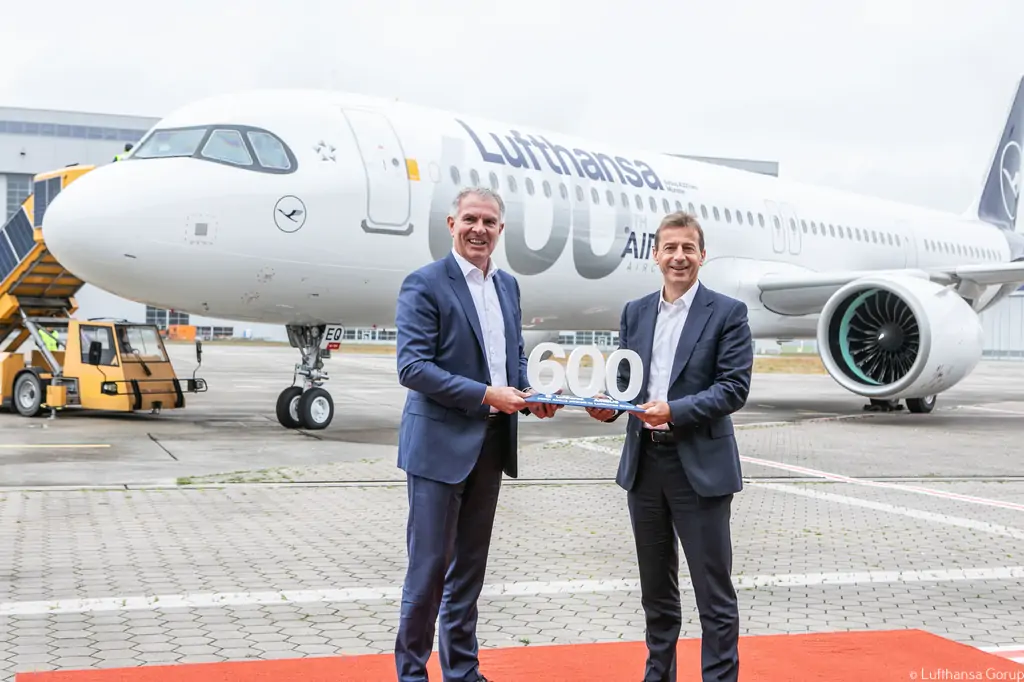
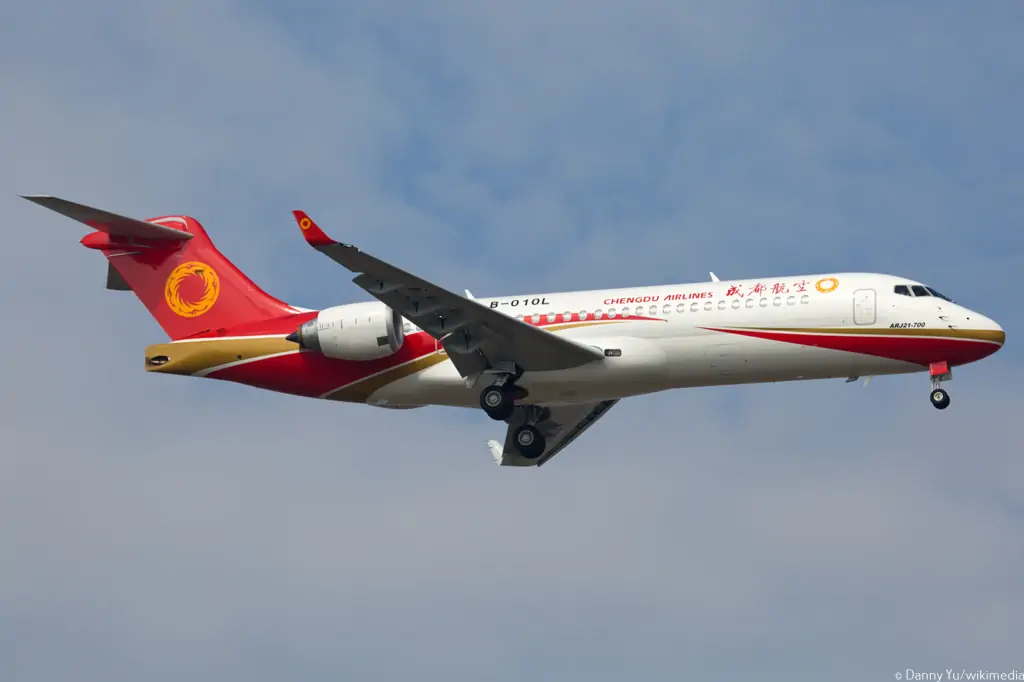
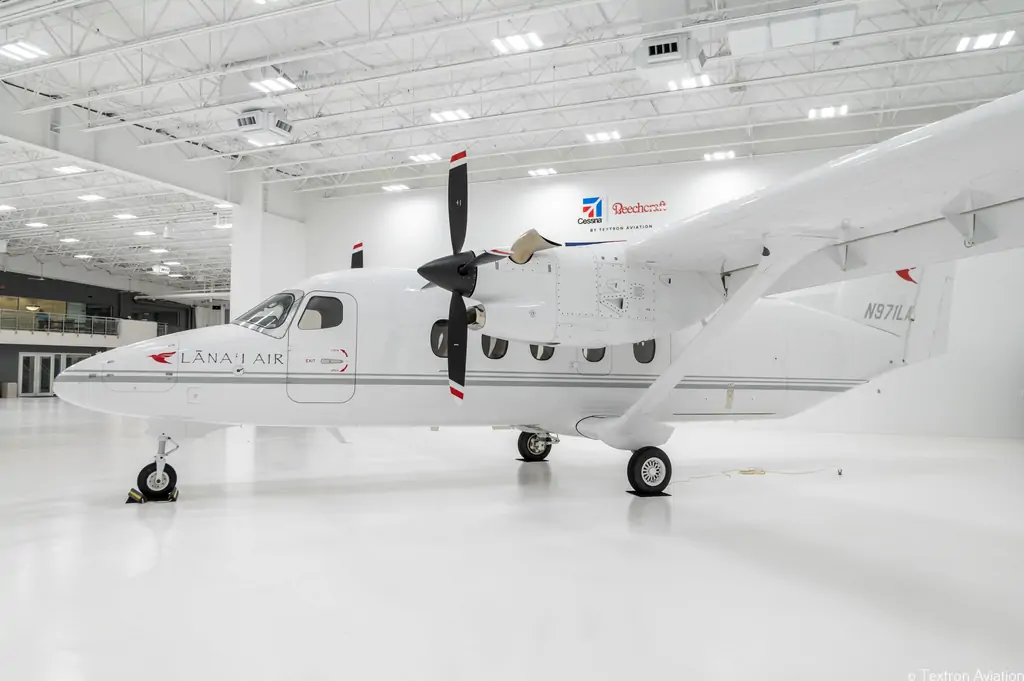
Comment